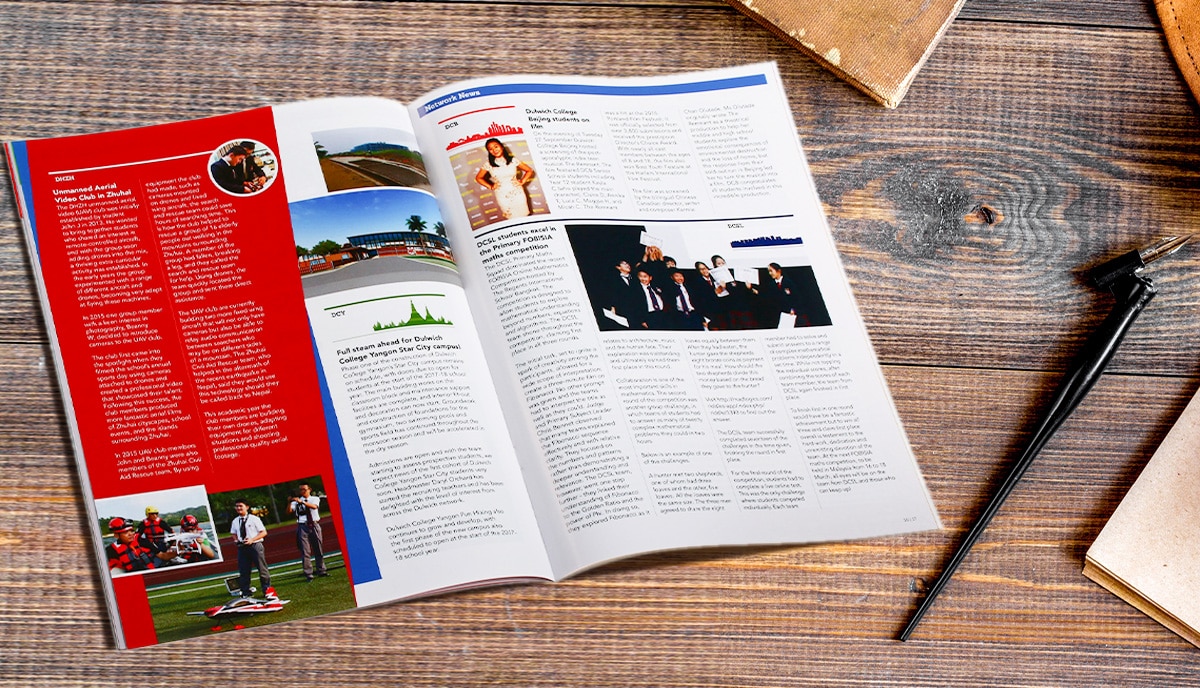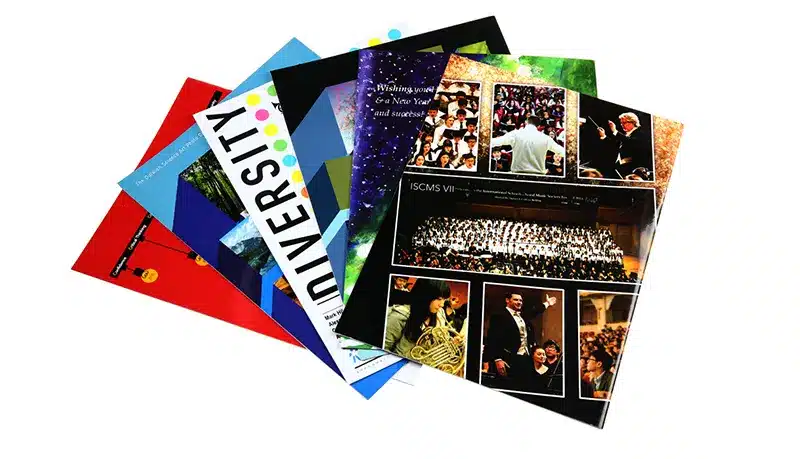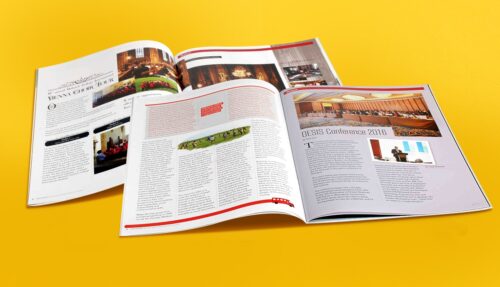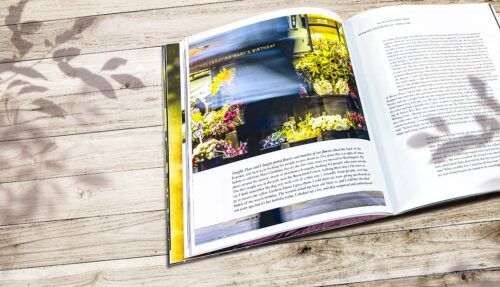We explore the pros and cons of printed vs digital newsletters

Have you ever wondered if your printed newsletter is worth the effort — or if it’s time to ditch print altogether for digital alternatives like email and social media? It’s tempting to assume that printed newsletters are outdated, but the reality might surprise you. When you dig into the data, printed newsletters can still pack a serious punch when it comes to engaging customers, building loyalty, and delivering results.
Whether you’ve never tried a printed newsletter, gave it up in favor of digital channels, or are frustrated by underwhelming returns on your current efforts, this post is for you. We’ll explore why print is still a powerful tool in the digital age and share practical tips to maximize your newsletter’s impact. You might just discover it’s time to give print another look — or a fresh start.
Follow the evidence
Direct mailing remains one of the most successful and robust forms of business promotion and product or service marketing. And among the several materials which work best in a direct mailing campaign, the newsletter stands out head and shoulders above most others bar, perhaps, the printed product catalog.
But don’t take our word for it. Dig into the data and evaluate the evidence. Recent studies highlight the enduring effectiveness of printed newsletters in marketing strategies. For instance:
- High response rates: Print materials receive an average response rate of 9%, significantly outperforming digital channels like email, paid search, and social media, which average around 1%.
- Consumer trust: A substantial 82% of consumers trust print material when making purchasing decisions, indicating a strong credibility associated with print media, including newsletters.
- Enhanced engagement: Approximately 88% of people take the time to look through the print materials they receive, demonstrating higher engagement levels compared to digital communications.
According to several other recent studies and surveys, 80% of consumers read mailed newsletters. Another analysis showed that most consumers prefer printed marketing materials to their digital cousins, that they are more likely to interact with them, return to them, and remember the core content and marketing messages that newsletters communicate.
These statistics suggest that incorporating printed newsletters into your marketing efforts can lead to higher engagement and trust among your audience.
What makes a newsletter different from other marketing materials?
You may wonder what’s so special about newsletters. The value of catalogs, promotional flyers, and informational booklets may seem clearer. But newsletters have a very special potency as people who receive them are already “warm leads” because they have subscribed. Not only that, but a newsletter can further encourage engagement with your brand and build trust through informational articles, company profiles, product reviews, hot topics, special offers, and even humor.
While the average marketing email needs to be kept short, typically under 200 words, your company newsletter can range from a single sheet to something more resembling a glossy magazine.
A good newsletter, well-designed and rich in thoughtful, well-written content, becomes something consumers and potential customers look forward to and enjoy. An expertly designed, beautifully printed mail out newsletter establishes an emotional connection with your repeat buying customers, attracts fresh interest in your brand, builds authority in your industry or niche, and positions your representatives as experts and thought leaders.

Why printed newsletters have more impact
Nostalgia
In today’s fast-paced environment, many consumers — across all age groups — feel a sense of nostalgia for a simpler, slower time, even if their ideas of it come from books, movies, or imagination. The tactile experience of a printed newsletter has a unique, cross-generational appeal. Its physical presence, combined with the anticipation of waiting for it to arrive in the mail, makes it more likely to be opened, read, kept, and shared. Unlike yet another email or social media post, a printed newsletter stands out and captures attention in a way digital communication often can’t.
More time for better content
The digital age has left most people with overflowing inboxes, where hundreds of unopened emails compete for attention. Email providers and social media platforms increasingly filter out promotional material, often flagging it as spam and sending it straight to the trash. Even if your email newsletter is opened — an uncommon occurrence — you only have seconds to grab the reader’s attention. And studies show that information consumed online is less likely to be retained compared to what we read in print.
A printed newsletter, on the other hand, offers the time and space to truly engage your audience. It can inform, entertain, and persuade in ways digital communication struggles to replicate. Mailed newsletters, especially those sent to voluntary subscribers, enjoy significantly higher open rates than even the best email campaigns. When your content is compelling and valuable, recipients will read it — often making time in their day to give it their full attention.
Even if the recipient doesn’t open your printed newsletter, the branded envelope sitting on a kitchen counter, desk, or hall table gets noticed. That brief moment of visibility offers more exposure than an email automatically filtered into oblivion ever could.
Optimises multichannel marketing
When elevators were invented, stairs didn’t disappear. Similarly, movies didn’t render novels obsolete. Yet, there’s a persistent myth in some industries that new technology must replace the old. While this might occasionally be true, digital marketing will never entirely replace offline marketing. In fact, studies consistently show that the most effective campaigns are multichannel, blending digital and print strategies.
A significant portion of the market remains skeptical of digital media, making traditional approaches essential for reaching them. Printed newsletters can also bridge the gap between offline and online channels. By incorporating tools like QR codes or AR features, a newsletter can direct readers to your blog, website, or product pages, offering deeper engagement with videos, technical specs, special offers, or subscription deals.
Charities and nonprofits have long recognized the power of printed newsletters, using them as the cornerstone of their outreach efforts. These organizations aren’t clinging to outdated methods — they’re leveraging multichannel strategies to create meaningful emotional connections and long-term engagement. Their ability to seamlessly integrate print and digital efforts is a major driver of their success. Any business aiming to build stronger customer relationships would do well to follow their example.
Top tips to make a successful printed newsletter
If you’re intrigued by the possibilities a printed newsletter could offer for your marketing strategy, we’ve got you covered. Here are our top tips for creating an effective printed newsletter based on over 25 years of experience in the printing industry, working with businesses and nonprofits worldwide.
Content is king
The success of any newsletter — printed or digital — hinges on its content. Throwing something together won’t cut it. Work with your marketing team to develop a content plan, and if you lack skilled writers in-house, consider hiring a professional copywriter or agency.
Even a simple one-page newsletter should be thoughtfully crafted and professionally designed. Remember, your newsletter represents your brand — it’s a salesperson, ambassador, and marketing agent in one. Done well, it’s an investment that delivers a strong return.
Quality is queen
Great content deserves a high-quality presentation. Professional design is essential to create a visually appealing, easy-to-read newsletter with engaging layouts, colors, and graphics.
But equally critical is professional printing. Avoid the temptation to print newsletters on office machines — they’re costly and produce subpar results. For newsletters with multiple pages, a glossy cover, or binding, offset printing is the most cost-effective way to ensure high-quality results, especially for mailing lists over 100 recipients.
Use data and A/B testing
Don’t rely on guesswork when designing your newsletter. Leverage market research to understand your audience and tailor your content and design accordingly. Start with a short run of trial newsletters featuring different styles, formats, or content, and gather feedback through surveys or interviews. Use this data to refine your approach.
Once your newsletter is in circulation, apply A/B testing. For example, create two versions with different calls to action (CTAs) and see which performs better. You can test headlines, logos, layouts, colors, and more. This iterative process, guided by evidence, ensures your newsletter evolves to maximize engagement and return on investment.
Keep it clear and consistent
While testing and fine-tuning are important, simplicity is key to a successful newsletter. Avoid overloading your design with too many elements. Instead, focus on the content and visuals that resonate with your audience and stick with them. A clear, concise, and consistent approach will keep your newsletter cost-effective, easy to read, and impactful.
Let's talk. We're here to help!
At QinPrinting we have over 25 years’ experience in the commercial printing industry and work every day with our repeat buying enterprise clients and new customers to produce the finest quality printed marketing materials at an unbeatable price point. We are also genuinely committed to personalized customer care. Along with our expertise and efficient production protocols, it’s that which sets us apart and sustains a worldwide reputation for excellence.
When you’re ready to create your newsletter — whether a leaflet-style, single page mail out or multi-page glossy magazine, or something in between — talk to us. We’d be delighted to help you print a beautiful, effective, and professional newsletter which works hard to build your brand, promote your products and services, and increase consumer engagement. Shoot us an email to [email protected] or call us on +1 951 866 3971 (remembering potential time zone differences!) and we’ll be delighted to discuss your needs, answer questions, and help in any way we can.










